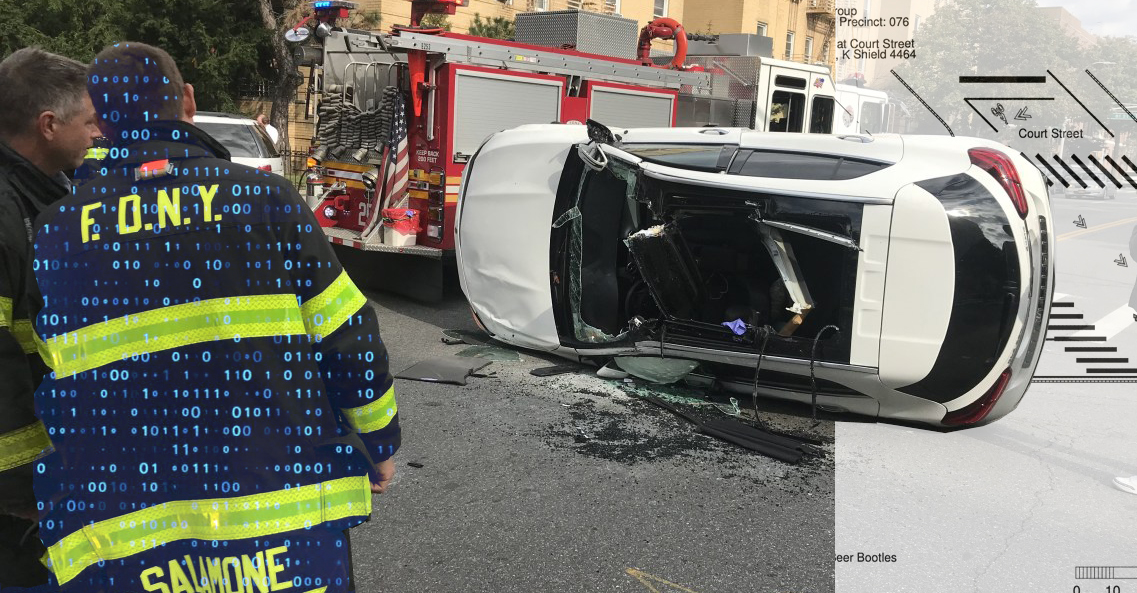Put it in the vault!
The federal Department of Transportation has just awarded its city counterpart $12 million to partly fund an innovative safety initiative that advocates have been seeking for years: a single repository where the disparate findings from multiple agencies about road crashes will be stored and analyzed.
It sounds like bureaucratic mumbo jumbo — indeed, the US DOT called the project a "comprehensive data warehouse that will store information upon which linkages can be made across datasets" — but the city DOT said this database will merge all the stray post-crash information and videos currently compiled by the police, ambulance workers, hospitals, the Department of Motor Vehicles and the city DOT itself.
This vault of information will then be analyzed with AI technology that, hopefully, will give planners a more complete and comprehensive analysis that detects patterns of poor road designs that, in theory, will allow DOT to improve safety.
These improvements could happen in real time, the US DOT said, providing the example of a sophisticated traffic signal that can adjust its own timing if it detects "the presence of vulnerable road users" or "when a vehicle is approaching the intersection in a dangerous manner."
DOT Commissioner Ydanis Rodriguez was very pleased to get the grant, a nice chunk of the $1 billion allocated in this cycle from the Safe Streets and Roads for All program that gets its money from President Biden’s Bipartisan Infrastructure Law.
“This grant will help us save lives by better harnessing new advances in AI technology and more comprehensively analyzing crashes," said in a statement. "The city will be creating a single, secure database to integrate a wide variety of data across agencies and institutions to review crash details more holistically and will be implementing the use of AI technology to detect traffic patterns and potential conflicts, as well as for real-time adaptive signal timing.”
The agency added that combining crash reports with demographic, medical, and geographical data will help the city know more about the drivers who cause crashes, how those crashes occur, and even follow long-term outcomes and consequences.
About $2.4 million of the overall grant will go to the Department of Citywide Administrative Services to deploy 360-degree cameras to the 600 buses and trucks in the city fleet, joining the 1,600 city fleet vehicles that already have such cameras.
As with DOT, DCAS said the money will also fund AI capabilities will be added to that ongoing initiative to study what those cameras see.
Street safety advocates have long called for a far-more-comprehensive approach to post-crash analysis that goes beyond the police merely treating a crash as a crime scene. A public health approach — think about how multiple agencies figure out how a disease is spread — is needed.
But the city Health Department hasn't done a survey of serious injuries to cyclists or pedestrians since 2016, hasn't analyzed its own post-crash health outcomes data since 2017, hasn't updated its analysis of pedestrian fatalities or motor vehicle occupant fatalities since 2017 (all that old data is kept on the Department's website).
That may change, thanks to the federal grant, which will give the agency a clearer picture of who is involved in crashes, how those crashes occur, and what are the long-term outcomes and consequences because the city will now combine crash reports with demographic, medical, and geographical data.
The $12-million grant was the only award the city got in this cycle. By comparison, the biggest grant of all was $30 million to Los Angeles to implement pedestrian safety improvements at 77 intersections with high pedestrian traffic, yet have unmarked crosswalks, unsignalized intersections, wide streets, and high driver speeds.






